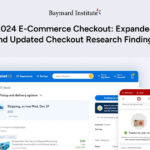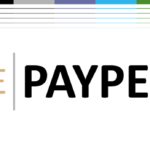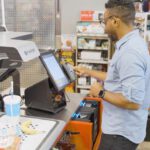In today’s “always on” economy, consumers demand instant gratification in all areas, and their personal finances are no exception. Whether it’s buying a coffee, paying bills or accessing credit, consumers want it to be simple, fast and efficient.
Those expectations are now spilling over into the business world too, as streamlined consumer experiences are increasingly shaping the experiences that businesses want and need. After all, what company wouldn’t benefit from having instant payments and immediate access to credit?
That said, this so-called “consumerization of business” is proving to be a tougher nut to crack, because there’s so much more that needs to be reimagined.
“In a lot of cases we’re still just automating existing paper-based processes and speeding them up, rather than rethinking them entirely,” said Mike Kresse, division executive of B2B and Money Movement at FIS, in an interview with PYMNTS’ Karen Webster. “Do I really need to call up my community banker to get a line of credit, or do they already have exposure to the inflows and outflows of my business? If so, then the line of credit should already be set up and ready for when I need it, just in time.”
Further reading: As Digital Business Payments Become the Norm, New Use Cases Emerge
Luckily, the foundations of that kind of “just in time” business transaction have already been laid. Recent years have seen a lot of networks spring up to help facilitate the exchange of various business documents, including purchase orders and invoices, as well as different forms of business payments.
Kresse said those networks have proven their worth in terms of advancing electronic payments and other digital transactions. The key now, which is something FIS is working on, is to somehow connect those networks through the creation of a standard information exchange protocol, he said. That way, businesses will be able to operate in just one place but with the same benefits as if they belonged to multiple networks.
More like this: Western Union CEO: Bringing Global Citizens Into The Connected Economy
“At FIS we’re working with various card network providers, B2B payments and B2B receivable solutions providers to extend that overall ‘uber network’,” Kresse said. “So it allows one business to plug in only once, versus having to integrate with ten different networks. That’s really where the next frontier lies.”
Kresse believes this idea of an uber network would create immense opportunities for businesses. One area that he sees as ripe for disruption is accounts payable payments, where real-time transactions that carry a full payload of remittance information can be processed immediately by the recipient’s ERP system, without any manual intervention required.
“It’s the best path to straightforward processing and immediately receiving funds, and also timeliness of when my funds are released,” he said. “If I send a check as a business, I don’t know when the funds are going to come out. Is it going to be three days, five days, seven days? But with real-time payments I can time it exactly.”
The ability to insert more liquidity into supply chains, for example, would also be transformational, Kresse said, by streamlining credit access for thousands of smaller businesses.
“It allows you to inject liquidity into the equation, so now you have financing partners that can help with the various supply chain financing,” he said. “And they can do it all digitally and electronically and do it in real time.”
You might like: Stripe Says B2B Digital Payments Transformation Is in ‘Early Innings’
The financial services industry is all but compelled to head in that direction. As Kresse pointed out, most businesses look at change purely from a financial perspective. So, if they can adopt a new solution that allows them to hold onto working capital for longer, or get access to working capital more quickly, they’ll do it. Or if a new solution can effectively reduce fraud or the cost or processing payments, that’s another reason to go for it.
“Mid-market and larger businesses are looking at those kinds of multiple dimensions when evaluating whether or not they want to deploy new technology,” he said.
Smaller businesses, on the other hand, are looking for solutions that are closer to the consumer experience. What they want above all else is simplicity, for example by having those new payment experiences exist in the platform where they already operate their business.
“So if they’re using another software vendor’s application to manage their business, why can’t they open a checking account from within that app? Why can’t they send an invoice to their customer and accept any form of payment through it? And why can’t they secure financing there?” he said. “So that’s really the next evolution, what we might call embedded finance, helping small businesses to be able to find those financial services within the existing environment where they operate.”
Further reading: Clean Reconciliation Will Be the Biggest Benefit of Speedier B2B Payments
Kresse said we’re already seeing the early stages of this evolution with advances in areas such as automation and the slow chipping away of paper-based processes. The coronavirus pandemic, he said, led to rapid uptake of digital payment modalities in business. Now, many of those same businesses are looking at other ways digitization can benefit them.
“We’re seeing businesses of all sorts of shapes and sizes asking themselves, how can I automate? How can I remove unnecessary costs? How can I make sure that I’m always protected and have liquidity when I need it?” he said. “And I think the next three to five years are going to show major advancements and adoption of many of those types of technologies. It’s going to be really exciting.”






